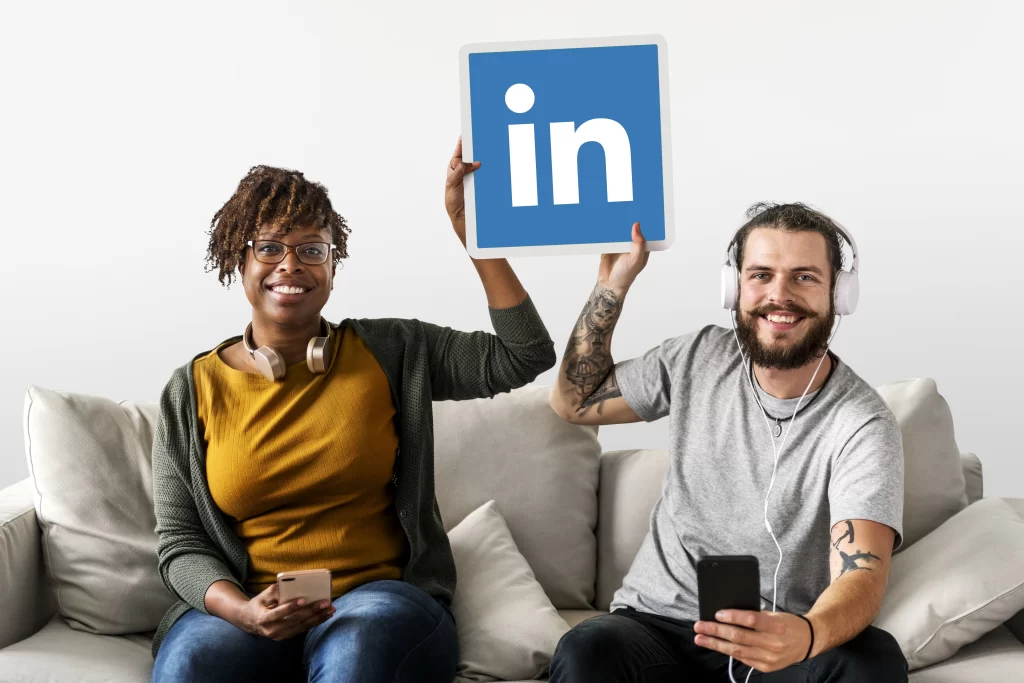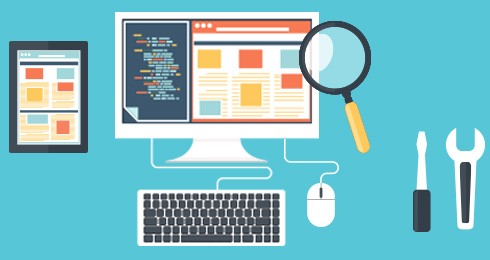In the fast-paced world of digital marketing, staying ahead of competitors is no easy feat, especially in the B2B space. That’s where the LinkedIn Ads Library comes in, a game-changing tool that unlocks a treasure trove of insights for advertisers. Whether you’re a seasoned marketer or just dipping your toes into LinkedIn advertising, this resource offers a unique window into your competitors’ strategies, helping refine your campaigns and boost ROI.
But what exactly is the LinkedIn Ads Library, and how can you harness its power to elevate your marketing game? This comprehensive guide’ll dive deep into its features, benefits, and practical applications, showing you how to leverage it like a pro in 2025.
LinkedIn, with over 1 billion users worldwide as of early 2025, remains the go-to platform for professional networking and B2B advertising. Its robust advertising ecosystem offers precise targeting options like job titles, industries, and company size. Yet, crafting ads that resonate requires more than guesswork—it demands data-driven inspiration.
The LinkedIn Ads Library fills this gap by providing transparency into paid campaigns, letting you spy on competitors ethically and creatively. This tool empowers you to optimize your strategy without reinventing the wheel, from uncovering ad formats to dissecting messaging. Let’s explore how it works and why it’s a must-have in your marketing toolkit.
What is the LinkedIn Ads Library, and how can you access it?
The LinkedIn Ads Library is a free, public tool launched by LinkedIn to showcase active and historical paid ads running on its platform. Unlike organic posts, which vanish from feeds over time, this library archives sponsored content, making it a goldmine for competitive analysis.
It’s tailored for B2B marketers, offering insights into professional-focused campaigns you won’t find in broader ad libraries like Facebook’s or Google’s. As of April 2025, it’s become a staple for advertisers aiming to benchmark their efforts against industry leaders.
Accessing it is straightforward. Head to linkedin.com/ad-library/home or search “LinkedIn Ads Library” on Google—it’s typically the top organic result. Once there, you’ll find a clean interface to search by company name, keywords, or filters like country and timeframe (e.g., last 6 months). Alternatively, visit a competitor’s LinkedIn company page, navigate to the “Posts” tab, and click “Ads” to see their sponsored content directly.
This dual-access method ensures flexibility—whether researching a specific brand like HubSpot or exploring trends in SaaS advertising, the LinkedIn Ads Library has you covered. The best part? No premium account is required, making it accessible to all.
What sets it apart is its focus on LinkedIn’s unique ecosystem. Unlike Meta’s Ad Library, which spans consumer-driven platforms, this tool zeros in on business-oriented ads—think webinars, whitepapers, and thought leadership pieces. It’s a snapshot of what works in a professional context, revealing ad creatives and the strategies behind them. For instance, you might notice a competitor like Salesforce leaning heavily on video ads to promote a new CRM feature—data you can use to inform your next move.
Why the LinkedIn Ads Library Is a Game-Changer for Marketers
The power of the LinkedIn Ads Library lies in its ability to transform guesswork into strategy. Competitive analysis isn’t new, but LinkedIn’s tool simplifies it by handing you a curated view of what’s working in your niche.
Imagine you’re launching a campaign for a cybersecurity firm. By exploring the library, you could discover that top players like CrowdStrike use carousel ads with bold stats to grab attention, while others lean on single-image ads with clear CTAs like “Download Now.” This isn’t about copying; it’s about learning from success and adapting it to your brand’s voice.
One major perk is spotting trends. In 2025, video adoption is surging on LinkedIn, with short-form clips (under 30 seconds) boasting completion rates 200% higher than longer formats, according to recent stats. The LinkedIn Ads Library lets you confirm this by showing how competitors prioritize video over static images.
You might also notice a rise in interactive elements—polls, quizzes, or emojis—that boost engagement. These insights help you stay relevant, ensuring your ads don’t feel dated in a fast-evolving landscape.
Another advantage is identifying gaps. By reviewing multiple ads from your space—say, cloud computing—you might see everyone pushing free trials but ignoring case studies. That’s your cue to zig where others zag, crafting content highlighting customer success stories. Plus, the library reveals campaign duration and frequency, hinting at what’s resonating.
If a competitor’s ad has run for six months straight, it’s likely a winner—dissect it for clues on copy, visuals, or offers. This level of transparency turns the LinkedIn Ads Library into a strategic ally, not just a browsing tool.
How to Use the LinkedIn Ads Library Like a Pro
Ready to tap into the LinkedIn Ads Library? Here’s a step-by-step approach to maximize its potential, blending tactics from top-ranking blogs with fresh 2025 twists:
- Start with Competitor Research
List your top five competitors—direct rivals or aspirational brands. Search their names in the library and analyze their ads. Look at ad types (video, carousel, single image), messaging tone (formal vs. casual), and CTAs (e.g., “Sign Up” vs. “Learn More”). For example, if Adobe’s ads consistently use sleek visuals and “Get a Demo” prompts, test similar elements in your campaigns. Don’t mimic—adapt to your USP. - Decode Winning Elements
Study high-performing ads—those with long run times or frequent posts. What grabs attention? A B2B software firm might use stats like “80% faster workflows” paired with a minimalist graphic. Note color palettes (bold vs. neutral), image styles (product shots vs. people), and copy length (short and punchy vs. detailed). A/B test these in your ads to see what clicks with your audience. - Spot Industry Trends
Filter by keywords like “SaaS” or “HR tech” to see broader patterns. Are videos under 30 seconds dominating? Are CTAs shifting toward “Book a Call”? In 2025, thought leadership ads (e.g., expert tips) are gaining traction, with a 1.7x higher click-through rate per recent LinkedIn stats. Use the library to validate these shifts and stay ahead. - Fill Strategy Gaps
Compare competitors’ ads to your own. If they all promote webinars but you don’t, test one. If their landing pages focus on pain points like “data breaches” while yours don’t, tweak yours. The library highlights what’s missing—use it to brainstorm out-of-the-box ideas that differentiate you. - Monitor and Iterate
The digital landscape evolves fast. Revisit the library monthly to track new ads and adjust your approach. If a competitor drops an underperforming format (e.g., text-only ads), avoid it. If they double down on video, experiment with your own. Pair this with LinkedIn Campaign Manager analytics for a complete picture of what works.
Real-world example: A tech startup I worked with used the library to analyze Slack’s ads, noticing a focus on team collaboration stats. They pivoted their campaign to highlight “50% faster project delivery,” paired with a carousel ad, and saw a 25% CTR boost. That’s the LinkedIn Ads Library in action—practical, data-driven inspiration.
Benefits, Pitfalls, and Best Practices
The benefits of the LinkedIn Ads Library are clear. It’s free, saving you from pricey third-party tools like AdClarity. It’s targeted, focusing on LinkedIn’s B2B audience—ideal for niche markets. It boosts ROI by revealing what resonates, cutting trial-and-error costs. Recent data shows that LinkedIn ads convert 6x more than other platforms, and using the library to optimize your ads amplifies that edge. Plus, it sparks creativity, breaking writer’s block with fresh ideas from top brands.
But there are pitfalls to dodge. Blindly copying competitors is a trap—your ads will blend into the noise. A blog from Lunio.ai warns against this, urging marketers to “champion your USP” instead. If you sell project management software, don’t just ape Asana’s “Work Smarter” tagline—highlight what makes you unique, like “AI-driven task prioritization.” Another limit: the library doesn’t show performance metrics (clicks, conversions), so you’re inferring success from longevity or frequency. Cross-check with your analytics to confirm what works.
Best practices? Be ethical—use it for inspiration, not plagiarism. Combine it with tools like Kaya’s Competitor Ad Intelligence for deeper spending insights or LinkedIn’s Campaign Manager for your data. Test relentlessly—borrow a competitor’s bold CTA, tweak it, and measure results. Stay current—2025 trends like AI-driven ads or vertical formats (11% higher CTR) should guide your experiments. The library’s power shines when you blend its insights with your creativity.
Conclusion: Unlock Your LinkedIn Ads Potential
The LinkedIn Ads Library isn’t just a tool—it’s a competitive edge waiting to be tapped. By exploring its depths, you can decode what makes B2B ads tick, from standout visuals to killer CTAs, all while keeping your finger on the pulse of 2025 trends. It’s about working smarter, not harder—using real-time data to craft campaigns that resonate with decision-makers and drive results. Whether refining an existing strategy or launching a new one, this resource offers clarity in a crowded digital space.
Start today: pick a competitor, dive into the library, and spot one element to test—a short video or a pain-point-focused headline. Pair it with your brand’s unique spin, and watch the magic happen. The power of the LinkedIn Ads Library lies in its simplicity and depth—unlocking it is up to you. Ready to outshine the competition on LinkedIn? Your next big win is just a search away.
Wildnet Technologies is a top-notch digital marketing firm in India that has catered to its 4100+ clients’ social media marketing needs via our SMM, or social media marketing services, to garner more than 150% engagement and USD 10 million in revenue!
Read more
- How Should You Optimize LinkedIn Profile for Perfect Audience Engagement in 2024?
- Why Microsoft Acquired LinkedIn? A detailed analysis
- What is Sora Turbo AI? Everything You Need to Know
- Effective Digital Marketing Strategies for Schools
- Digital Marketing for Transportation and Logistics Companies
- How to Choose the Right White Label SEO Provider: A Comprehensive Checklist





